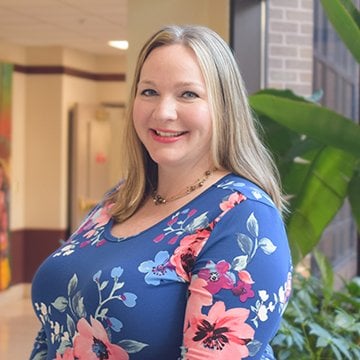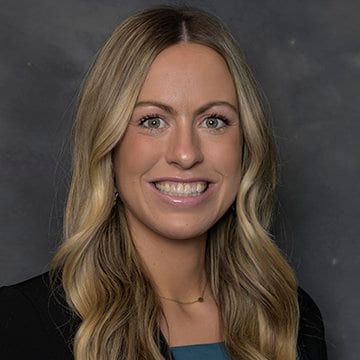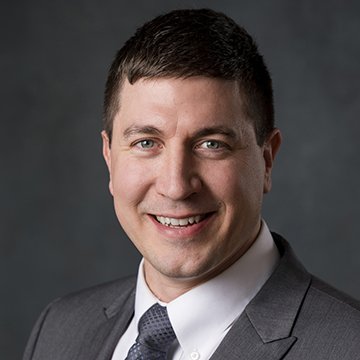Providing healthcare to our rural communities
Everyone should have access to medical services, no matter the size of their community. Lawrence is surrounded by smaller cities and towns with lower populations and without larger infrastructure such as a hospital or an airport. In healthcare, these areas are known as rural communities. For the people living there, it can be harder to get the healthcare they need.

Brooke Bacon
“A lot of times people don’t think about rural communities, and that can be a problem,” said Brooke Bacon, physician practice manager for LMH Health Primary Care rural clinics. “These communities struggle with access to quality care, recruitment and retention of qualified healthcare providers, cost of care and lack of insurance coverage, as well as an aging population with limited resources easily available to them.”
LMH Health has four clinics serving the rural communities of Baldwin City, Eudora, McLouth and Tonganoxie. These clinics strive to meet the medical needs of residents and improve the quality of life in the community.
“Just being here improves patient outcomes and in the process, we become an integral part of these communities,” said Bacon. “It helps people see the quality of care we provide close to home and the importance of having accessible healthcare in their hometown.”
Rural health clinics improve the health of their communities by providing routine screenings, labs, imaging, women’s and men’s wellness exams, and pediatric care.

Amber Walker
“We see patients across the lifespan, from newborn to geriatric, to provide whole-family care to the community,” said Amber Walker, a nurse practitioner with LMH Health Primary Care in McLouth. “We focus on wellness and healthcare screenings to try to provide a more holistic and preventative approach to care.”
Rural clinics also provide a wide range of other services, including X-rays, laceration repair, basic splinting and casting, smoking cessation and weight loss counseling, and management of chronic health issues such as diabetes, hypertension and high cholesterol. When routine health maintenance is completed, it can help, limit or prevent chronic diagnoses in the patient’s future.
Overcoming health disparities
According to the Centers for Disease Control and Prevention, patients in rural areas can be at a higher risk for disease and death than those living in urban areas. The most common diagnoses in rural areas are heart disease, cancer and stroke. These conditions may be negatively impacted by various health disparities that can be found in rural areas, such as:
- Limited access to primary care because there are fewer providers nearby, and limited transportation options
- Limited access to specialty care
- Food deserts and a decreased variety of healthy foods
- Higher rates of poverty
- High rate of uninsured
Access to care
The first step to improving community health and overcoming health disparities is to improve access to primary care. LMH Health Primary Care clinics have begun to bridge the access gap by utilizing local transport companies for patients and streamlining the referral process to be easier for patients to navigate when they need a higher level of care. They also provide payment options and financial assistance to patients to ease the cost of care and share information about other available resources based on a patient’s needs.
Improving access to healthcare does not happen only in a clinical setting. LMH Health Primary Care clinic staff can be found participating in community parades, local festivals and health fairs to bring awareness to the importance of routine screenings. This helps increase awareness of the services their local clinic provides.

Jared Abel
“It’s important that we are involved in all of our communities,” said Jared Abel, vice president of strategy and clinic operations at LMH Health. “Having primary care clinics in rural areas and being active in the communities outside of the clinic setting allows us to bridge some of the gaps when it comes to accessing healthcare.”
Clinics also partner with school districts to provide flu shot events and with OrthoKansas to take care of athletes by providing sports physicals and a sports injury clinic for middle and high-school kids. The clinic in Baldwin City also collaborates with Baker University to assist with providing care for college students.
“We are dedicated to improving access to primary care and hope to be an advocate for our patients to ensure they receive the high-quality care that they deserve, regardless of geographical location,” said Walker. “Being active allows for us to become known in our community and address the concerns of the individual. The patient is our top priority and we recognize the importance of personalized care.”
To help address financial disparities, LMH Health Primary Care clinics also participate in a variety of programs, including:
- Turn a Page. Touch a Mind. (TAP-TAM) is a program that makes it possible for healthcare providers to give an age-appropriate book to children at every well check from six months to five years old. The program encourages families to read together and promotes literacy guidance and support at an early age.
- Vaccines for Children (VFC) is a federally funded program that provides vaccines to children at no cost. This helps address financial barriers to receiving recommended childhood vaccinations.
- Early Detection Works (EDW) offers free and low-cost breast and cervical cancer screenings based on the income eligibility of each patient. Patients will be able to take advantage of this program by mid-November once the enrollment process to be an EDW provider is complete.
Rural clinic staff often live in the communities where they work and are aware of the unique physical and emotional needs of their patients, as well as any health disparities they may be facing. Providing the most up-to-date care is a matter of pride, and commitment to improving access to that care is important for a healthier community. Meeting patients where they are can provide a path to a collaborative approach to meeting healthcare goals.
“I think there is a misconception that the healthcare available in rural communities is not as good compared to that an urban community, but it is,” said Bacon. “Our goal is to eliminate any assumption that care provided in rural health communities is not as good in comparison to urban areas. We strive to deliver the best patient care possible by establishing exceptional care teams and providing the same services that larger communities have.”